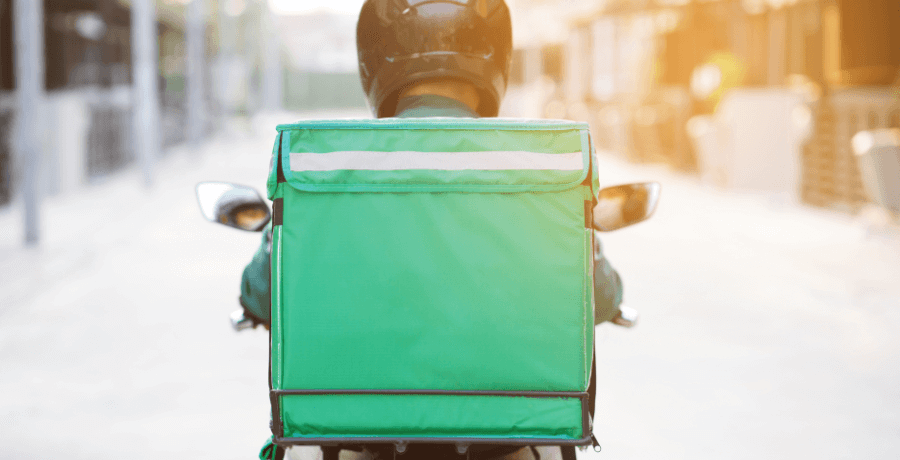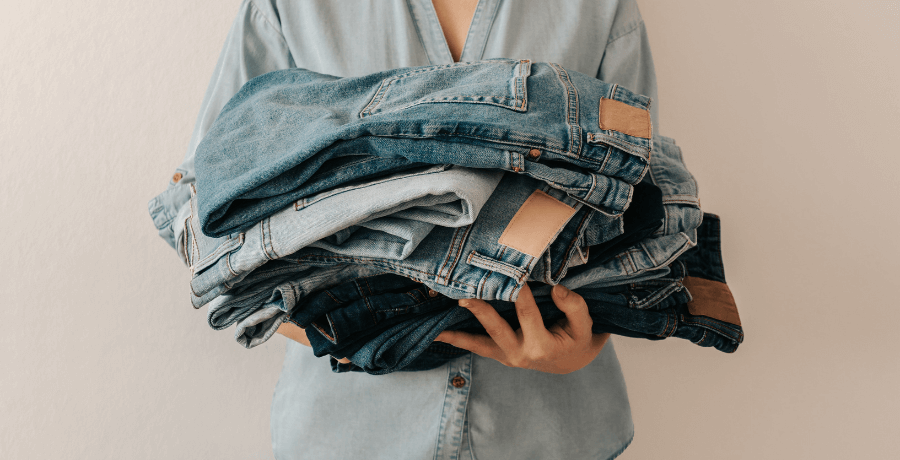Disclaimer: We will receive a commission if you make a purchase through our affiliate link at no extra cost to you. Please read our disclosure policy for more information.
Ever feel like you’re spending more than you should but can’t quite pinpoint where all your money is going? We’ve all been there. Sometimes, it’s not the big expenses like rent or a car payment that drain your wallet, but the small, everyday purchases you don’t think twice about. These seemingly minor costs accumulate into a surprising sum over time. Imagine what you could do with that extra cash... Travel, build your savings, or even start a passion project?
I know it’s easier said than done. Trust me, I once thought I was frugal until I took a hard look at my expenses and realized I was spending a small fortune on things like takeout and bottled water. With a bit of effort and awareness, I managed to cut back and save more than I thought possible. Here are 15 common things to stop buying—and practical alternatives to help you keep more of your money.
Spending Habits: A Global Wake-Up Call
How Much Are We Wasting?
It’s shocking to see how much the average person spends on non-essentials. In 2023, the average American household spent $3,600 annually on luxuries like subscriptions, dining out, and impulse buys. For context, that’s $300 a month, often on things that offer little long-term value.
In Europe, the numbers aren’t much better. A survey found that people in the UK spend nearly £1,500 annually dining out and buying non-essentials. While the types of purchases vary globally, the trend remains consistent: we’re spending without thinking, and it’s costing us.
This isn’t just about individuals—it’s a global issue. Imagine if even half of these unnecessary expenditures were redirected toward savings or investments. Let’s explore what we can cut back on to make room for meaningful financial growth.
Things to Stop Buying to Save Money
1. Unused Subscriptions
Subscriptions are sneaky little drains on your bank account. They seem harmless because each one is just a few dollars, but collectively, they add up. How many times have you subscribed to a gym, streaming service, or magazine, telling yourself it’s worth it—only to forget you ever signed up?
The easiest way to manage this is to review your bank statements. Look for recurring charges and ask yourself if they truly add value to your life. For example, I realized I was still subscribed to three streaming platforms when I only used one. Cutting back saved me over $300 a year. Plus, there’s nothing wrong with sharing subscriptions with friends or family to split the cost.
2. Bottled Water

Here’s the deal with bottled water: it’s a marketing gimmick. In many places, tap water is perfectly safe to drink, yet we’re convinced to pay for something that’s essentially free. On average, buying bottled water costs $500 or more annually—money that could be better spent elsewhere.
Switching to a reusable water bottle was one of the easiest changes I made. I also invested in a water filter, which paid for itself within months. It’s not just about saving money; it’s about reducing waste, too. Imagine all the plastic you’ll keep out of landfills just by refilling your bottle at home.
3. Takeout and Food Delivery

Let’s face it: food delivery is the ultimate convenience. But those delivery fees, tips, and inflated menu prices? They add up fast. I remember ordering takeout five times in one week and feeling shocked when I saw the total. Spoiler: it wasn’t pretty.
Instead, I started meal prepping on Sundays. It doesn’t have to be boring—you can still enjoy variety by preparing a few different dishes. Another tip: batch-cook your favorites and freeze portions for busy days. Not only will you save money, but you’ll likely eat healthier, too.
4. Brand-Name Groceries
How often do you reach for the familiar logo on the shelf, assuming it must be better than the generic version? It’s a habit marketers bank on, but store-brand products are often just as good—and significantly cheaper. Switching to generic brands can shave 20-30% off your grocery bill.
Don’t believe me? Next time you’re shopping, compare the ingredients of a name-brand cereal to the store-brand version. Nine times out of ten, they’re identical. Making this switch was one of the simplest ways I saved hundreds annually without sacrificing quality.
5. Coffee Shop Drinks

Ah, coffee shops—the ultimate indulgence. But let’s do some math: a daily latte at $5 adds up to $1,825 per year. That’s a lot of money for something you could easily make at home. When I realized this, I invested in a French press and started experimenting with flavors. It turned out to be more fun than waiting in line for my usual order.
If you can’t give up your coffee shop habit entirely, try limiting it to once a week. You’ll still get that treat-yourself feeling without the financial guilt.
6. Impulse Buys at Checkouts
Ever grab a candy bar or magazine while waiting in line? It’s a small cost, but over time, these impulse buys can amount to hundreds of dollars annually. Retailers know exactly how to tempt us by placing these items strategically.
The solution? Make a shopping list and stick to it. Better yet, use self-checkout whenever possible—it’s less likely to feature those enticing extras. I started doing this and was amazed at how much I saved just by avoiding those last-minute purchases.
7. Constant Electronics Upgrades

Tech companies release new gadgets every year, convincing us that our perfectly good devices are outdated. But do you really need the latest smartphone if your current one works fine? On average, people spend $1,200 annually on unnecessary tech upgrades.
Instead, focus on maintaining your devices. Replace your phone’s battery or get a case to protect it from damage. I’ve been using the same laptop for seven years, and with a few upgrades, it still runs like new.
8. Disposable Products
From paper towels to single-use razors, disposable items seem convenient but cost more in the long run. Switching to reusables can save you a surprising amount of money. For example, cloth napkins and reusable razors might have a higher upfront cost, but they last much longer.
I made the switch a few years ago, and it felt good knowing I wasn’t just saving money but also reducing waste. It’s a win-win situation.
9. Cable TV
With so many streaming options available, paying for cable feels unnecessary. Yet many households still shell out over $100 monthly for packages they barely use. That’s $1,200 annually—gone.
Switch to streaming platforms and use free trials to test which ones you like. Combine this with an inexpensive digital antenna for local channels, and you’ll save a fortune without missing your favorite shows.
10. Fast Fashion

Fast fashion may be cheap upfront, but its poor quality means you’ll replace items frequently. Plus, buying trendy clothes that go out of style quickly adds up. I used to be guilty of this until I realized I was spending over $1,000 annually on clothes I barely wore.
Instead, invest in timeless, high-quality pieces that last. I started curating a capsule wardrobe, and not only did it save me money, but it also simplified my mornings.
11. Unused Beauty Products

How many half-used bottles of lotion or lipstick do you have collecting dust? The average person wastes $125 annually on beauty products they never finish.
Before buying, ask for samples or try smaller sizes. I adopted a rule: finish what I have before purchasing anything new. It’s a small change, but it makes a big difference over time.
12. Overpriced Workout Gear

You don’t need expensive leggings or brand-name equipment to stay fit. Affordable alternatives work just as well, and second-hand gear is widely available. I stopped splurging on high-end workout clothes and focused on consistency instead. Spoiler: no one at the gym cares what you’re wearing.
13. Trendy Kitchen Gadgets
From avocado slicers to specialty blenders, kitchen gadgets are tempting but often unnecessary. Instead of buying every new tool, focus on versatile items like a good knife and a reliable pan.
14. Lottery Tickets
The odds of winning the lottery are astronomically low, yet Americans spend over $70 billion annually on tickets. That’s money better spent on an emergency fund or investments.
15. Excessive Gifting

The pressure to overspend on gifts can be overwhelming. Instead, focus on thoughtful, low-cost alternatives like homemade gifts or experiences. I once wrote a heartfelt letter as a birthday gift, and it meant more than anything I could’ve bought.
How to Earn More and Spend Guilt-Free
While cutting expenses is essential, there’s another side to the equation: earning more. By increasing your income, you can afford occasional indulgences without derailing your financial goals. Here are two practical resources to help you get started:
Save Smarter with Frugal Living Tips
Cutting unnecessary expenses doesn’t mean living a life of deprivation. It’s about being mindful of where your money goes. For daily habits that can transform your financial outlook, check out 25 Frugal Living Tips. Small changes, like meal planning or buying in bulk, can add up to significant savings over time.
Final Thoughts
Saving money doesn’t mean depriving yourself—it’s about making smarter choices. Start small, and soon you’ll notice a big difference in your bank account. Here’s to taking control of your finances, one step at a time.



